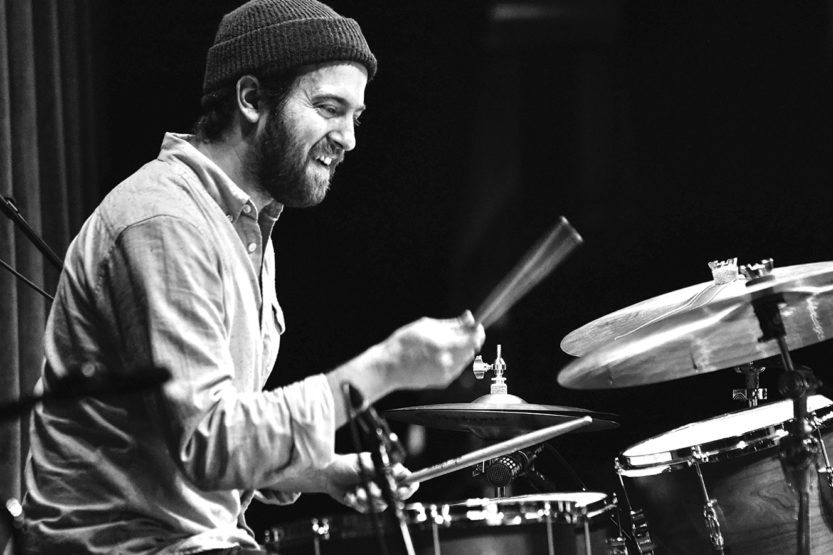Jazz man Lars-Erik Larson on his Illinois influences
 “It’s been fascinating for me to put music I’ve made out into the world,” says musician/composer Lars-Erik Larson. (Photo courtesy of Lars-Erik Larson)
“It’s been fascinating for me to put music I’ve made out into the world,” says musician/composer Lars-Erik Larson. (Photo courtesy of Lars-Erik Larson) When Lars-Erik Larson, MMUS ’12, began his work in the Jazz Division at the University of Illinois, he felt out of his depth. A drummer, he had followed a gut instinct to develop himself as a jazz percussionist, but his background in the genre wasn’t as diverse as his peers’.
“I felt like there were all these missing pieces in my music repertoire that everyone else already had,” Larson says. “My experience as a drummer was based on a variety of drumming styles; jazz was just one facet.”
Larson spoke with his UI advisor, who reassured him that a multidisciplinary background was a good thing. Larson’s challenge would be to determine how the other genres he played—indie pop, classical, rock and more—could translate into jazz.
For up to eight hours a day at Illinois, Larson practiced. One night, he took a break to drive to Chicago, where his favorite avant-garde jazz trio, The Bad Plus, was playing at the Jazz Showcase. Larson’s hero, Dave King, played drums and wrote music for the group.
After the show, Larson introduced himself to King and told him about his thesis work on chordless ensembles and nontraditional rhythm sections. It was the beginning of a long-term friendship between the two—and the extra spark Larson needed to reimagine how jazz drumming and composing might sound.
Fast-forward five years. It’s a chilly night in March 2016, but it’s cozy and warm inside Vieux Carré, a subterranean jazz club in St. Paul, Minn. It’s the release of Larson’s debut album, Authentic Midwestern, with Mancrush—the jazz quartet he formed after moving to the Twin Cities. The music he composes for Mancrush is not traditional jazz; it’s a combination of myriad influences.
“What I write is intentionally simple,” Larson says. “A lot of people would probably hesitate to call it jazz. It’s what the inside of my head sounds like.”
Palpitating drums form the backbone of the tunes, while rich jazz guitar, ruddy keyboard and saxophone coalesce to create sonic landscapes that might be what jazz looked like if it were a watercolor painting—lines blurring between music genres, bleeding into something new.
“It’s been fascinating for me to put music I’ve made out into the world, knowing what it means to me,” he says.

